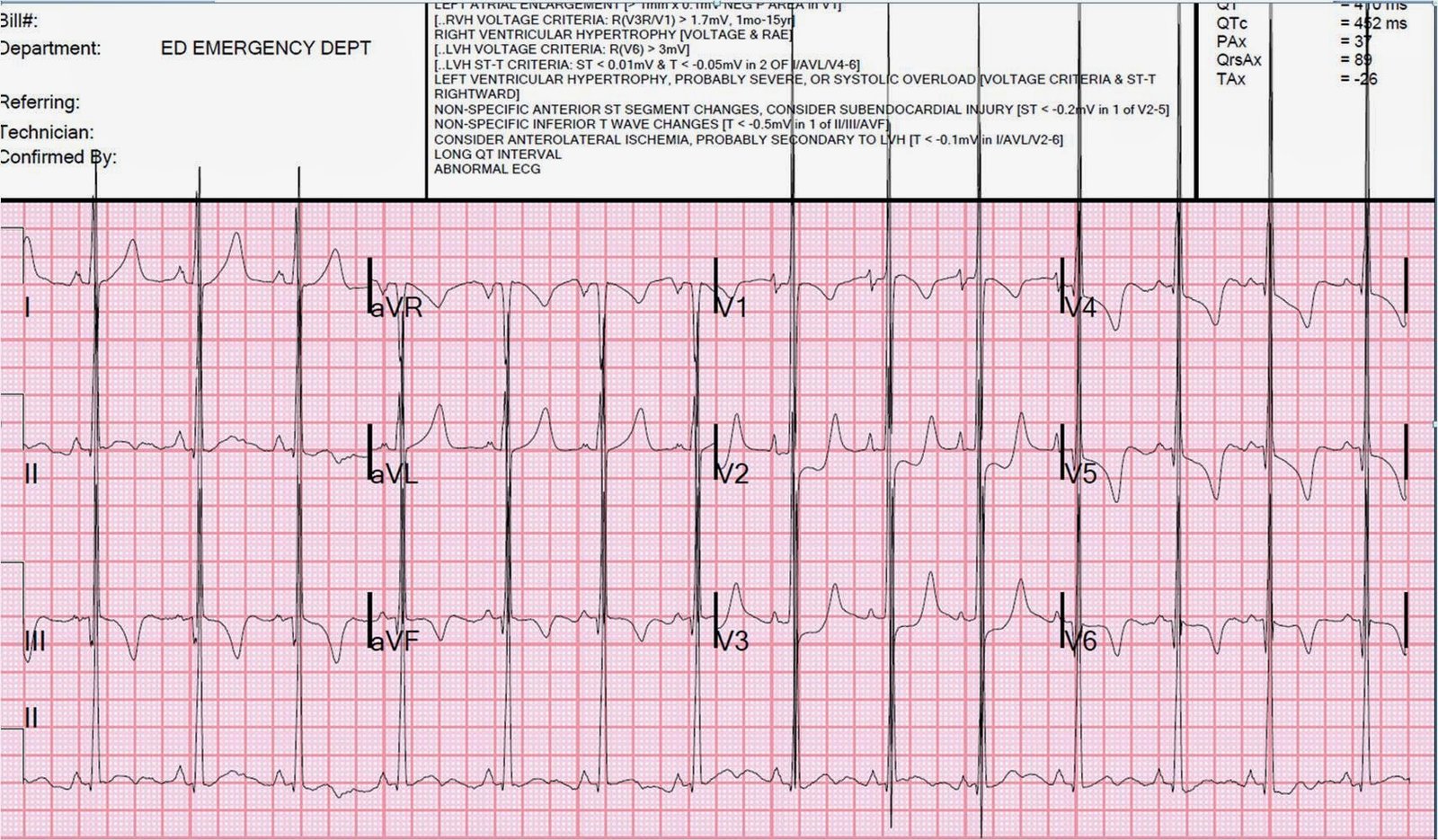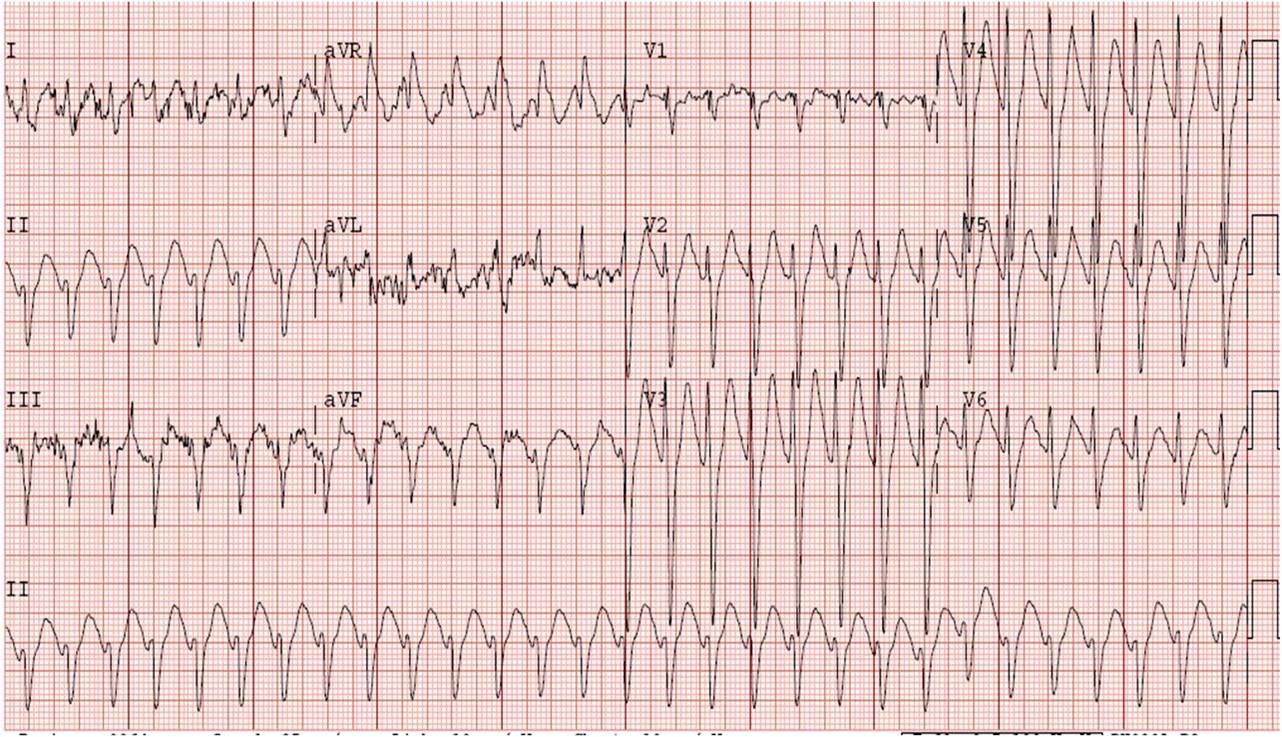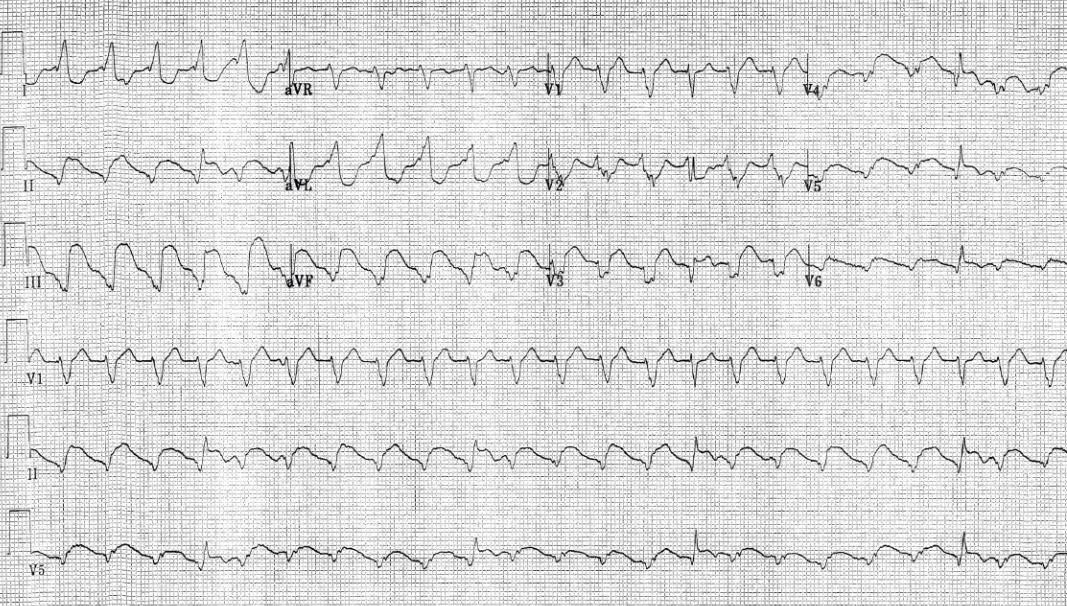A 41 year old male presented to a clinic with chest pain. Here is the ECG:
 |
|
|
The patient was sent home from the clinic. Days later, the overread by the cardiologist was, appropriately, “ST elevation with hyperacute broad-based T-waves concerning for acute anterior MI.” The clinic physician was notified and the patient was called back to the ED and arrived 4 days later.
Here was his ED ECG:
 |
||
|
Answer below:
His troponin was normal, as were subsequent serial troponins. An emergent echo was normal.
How does the Smith formula fare on this ECG? (See excel spreadsheet under “rules and equations”at the top of this blog under the heading “The equation for differentiating the ST elevation (STE) of subtle LAD occlusion from early repol”).
Here I use the 3-variable formula. Since this post was written, the 4-variable formula has been derived and validated as more accurate (also under heading above).
The clinicians in the ED calculated the 3-variable value of the first one at 23.31, and the second at 22.8. Both are below the cutoff for anterior STEMI of 23.4.
I calculated them as well:
1. On the first, I get STE60V3= 4 mm, QTc = 398 ms, and R-wave V4 = 16.5 mm.
The calculator comes up with 22.89
2. On the second, I get STE60V3 = 4 mm, QTc = 385 mm, and R-wave V4 = 17 mm.
The calculation comes to 20.98.
Again, both are less than 23.4.
If I saw this patient in the ED, I would be scared by his ECG. But the short QT and the tall R-wave in V4 make it less scary, and thus the equation value is less than 23.4.
4-variable values would be:
ECG 1: QTc = 398 ms, STE60V3 = 4 mm, RAV4 = 16.5, QRSV2 = 19.5.
Value = 17.57 (less than 18.2 is normal)
ECG 2: QTc = 385 ms, STE60V3 = 4 mm, RAV4 = 17, QRSV2 = 17.
Value = 17.145 (less than 18.2 is normal)
Would I then automatically dismiss this and say it is NOT anterior STEMI?
NO! This ECG is scary. The rule is about 90% accurate, but not perfect.
But I would also evaluate the patient more carefully before activating the cath lab. I would probably order (or do myself) an immediate cardiac echo to look for an anterior wall motion abnormality. If none were seen, I would not activate. If an anterior WMA were seen, I would activate the cath lab.




This is my first post so bear with me I'll try to keep it short. Obviously the first thing that pops out is the peaked T-waves (worried about slight elevated K?). As a paramedic, I would not activate the cath-lab but the inital ECG is a little concerning. The equation is new to me and I am not too sure I would be able to use it in the field but I'm sure it's useful. However after evaluating the 12-lead with my routine look I would dare to label some LVH. When taught ECG's I learned to measure STE at the j-point and the baseline where the T-wave terminates. With that rule I do not see much, if any STE. Finally with the deep S-waves in V2-V3, the minute STE would not be enough for me to call this a STEMI without any reciprical changes. Treatment for this patient would be the usual CAD treament and fax 12-lead for ED doc heads up.
Side note: Just purchased some 12-lead/ECG literature and would love any suggestions or any other blogs that are relevant (currently reading Dr. Smith's-ems12lead-EMcrit)
Thanks again and any advice/comments welcome,
Matt Lewis
1. T-waves are not peaked as in hyperK. They are not pointed.
2. There is > 2 mm of STE at the J-point in both V2 and V3. Many STEMI do not even have this much. The ACC criteria are simply 1 mm in 2 consecutive leads. The fact is, that the amount of ST elevation has little bearing on the final diagnosis.
3. This is not LVH, not by criteria nor by appearance.
4. Reciprocal Changes are only present in about 50% of anterior STEMI
5. Your ED doc would not know what to do with this, would probably activate the cath lab and would, in retrospect, be wrong.
Look through the index on the side for similar cases. There are two cases in January of sublte anterior STEMI which were correctly diagnosed by the equation. They are worth a look.
Steve Smith
Does the fact that the ECG hasn't changed in 4 days make anterior MI much less likely?
Absolutely. It establishes that this is the patient's baseline ECG.
Steve, why do you call the repolarisation "early repolarisation". This is rather a male repolarisation (no J wave, no hamac like repolarisation…)?
Pierre
There is tall r wave in lead 1,v2 &V3
In v2 &V3 there is not well formed r wave, absence of j wave
Chest pain continue than from 1st ecg without equetion how can we differentiate mi from early repolarization?
Pierre, many use "early repolarization" as a synonym for "normal variant ST elevation." That is the way I generally use it. For the purposes of pseudoSTEMI vs. STEMI, this is a useful way of looking at it.
Steve
Compare with old ECG, record serial ECGs, do high quality echo (absence of wall motion abnormality excludes significant epicardial coronary occlusion). If still uncertain, angiogram.